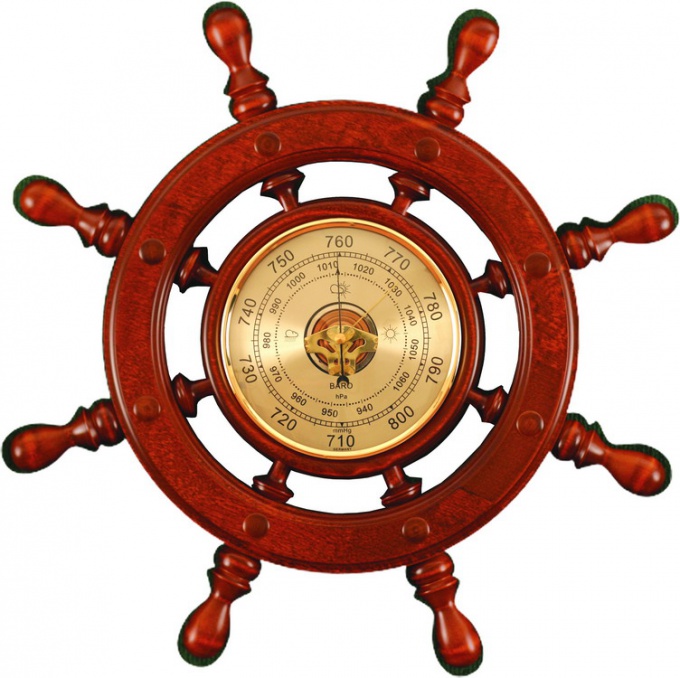You will need
- mercury barometer or aneroid barometer. And if you need to continuously take readings of pressure, use a barograph.
Instruction
1
Mercury barometer usually indicates the atmospheric pressure in millimeters of mercury. Just look at the scale of the level of mercury in the flask – and now you know the atmospheric pressure in your room. Typically, this value is 760±20 mm of mercury.St. If you want to know the pressure in Pascal, you use the simple transfer system: 1 mm. Hg.St. = Cash consideration of 133,3 PA. For example, 760 mm of mercury.St. = Cash Consideration Of 133,3*760 PA = 101308 PA. This pressure is considered normal at sea level at 15°C.
2
To remove the pressure readings from the scale of the barograph is also very simple. This device is based on the action of aneroid boxes, which responds to changes in air pressure. If the pressure increases the wall of the box cave in if the pressure is reduced, walls straightened. The whole system is connected with an arrow, and you just have to see what the atmospheric pressure value the arrow is pointing on the scale of the instrument. Don't be alarmed if the scale is in units such as hPa is hectopascal: 1 hPa = 100 PA. And for translation in a more familiar mm of mercury.St. just use the equation from the previous paragraph.
3
And to find the atmospheric pressure at any particular altitude is possible even without the use of the device, if you know the pressure at sea level. You will need some math skills. Use this formula:P=P0 * e^(-Mgh/RT).In this formula:P is the desired pressure at the height h;
P0 is the pressure at sea level in Pascals;
M is the molar mass of air, equal to 0.029 kg/mol;
g – earth's gravitational acceleration, approximately equal to 9.81 m/S2;
R is the universal gas constant, is taken to be 8.31 j/mol K;
T – temperature in Kelvin (to convert from °C to K, use the formula
T = t + 273, where t is the temperature in °C);
h – the height above sea level, where we find the pressure is measured in meters.
P0 is the pressure at sea level in Pascals;
M is the molar mass of air, equal to 0.029 kg/mol;
g – earth's gravitational acceleration, approximately equal to 9.81 m/S2;
R is the universal gas constant, is taken to be 8.31 j/mol K;
T – temperature in Kelvin (to convert from °C to K, use the formula
T = t + 273, where t is the temperature in °C);
h – the height above sea level, where we find the pressure is measured in meters.
Useful advice
As you can see, don't even have to be in a specific location to measure atmospheric pressure. It can be easily calculated. Look at the last formula, the higher we ascend above the earth, so it will be below atmospheric pressure. And already at the height of 4000 metres, water will boil at temperature of 100°C, as we used to, and approximately at 85°C because the pressure there is not 100 of 500 PA, and around 60,000 PA. Therefore, the process of cooking food at this altitude becomes longer.

